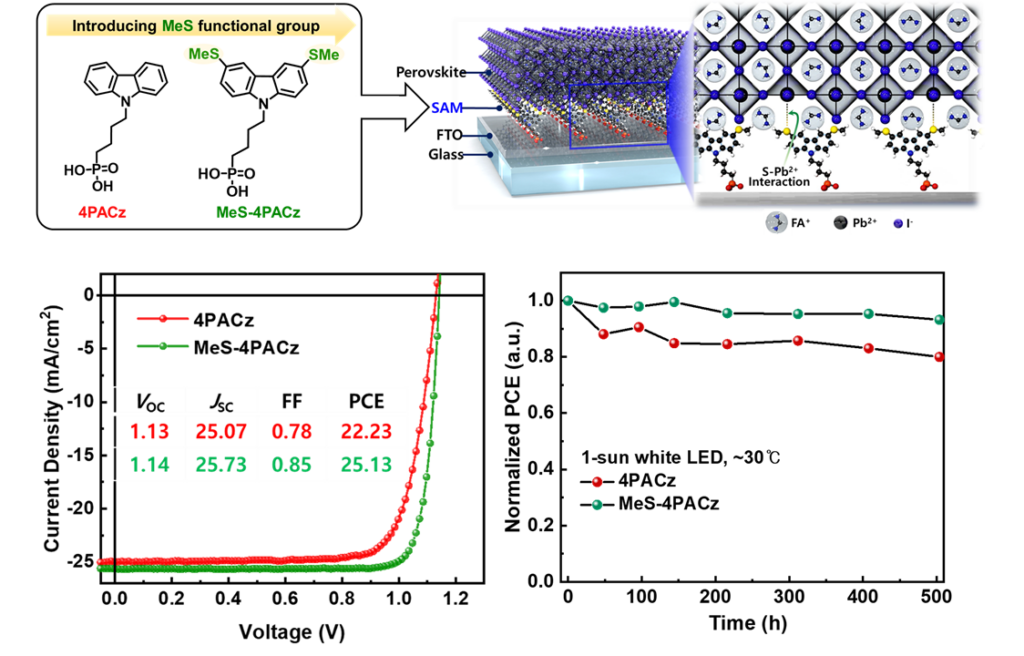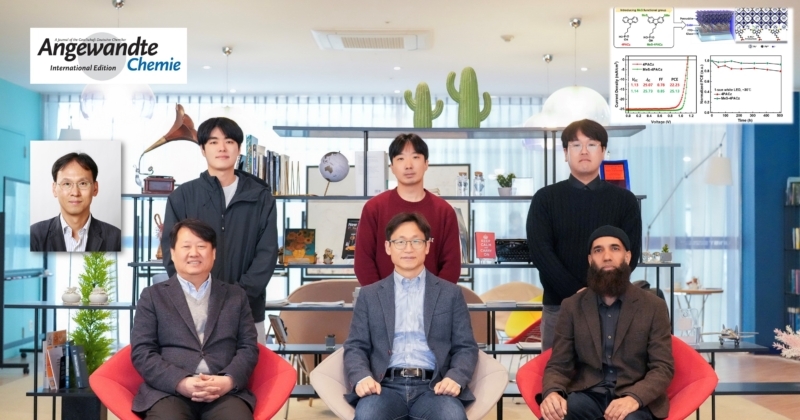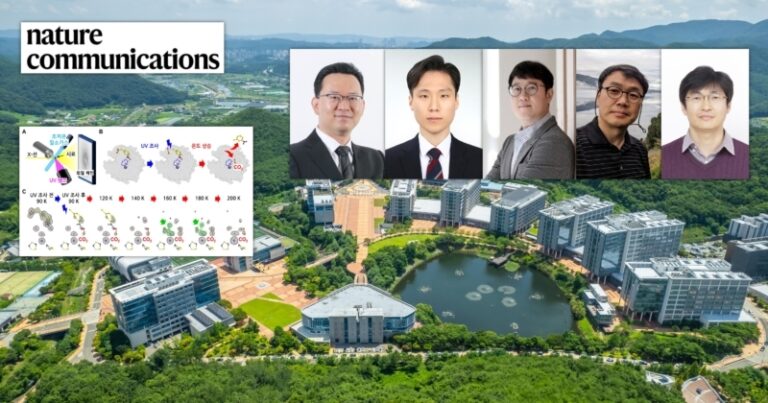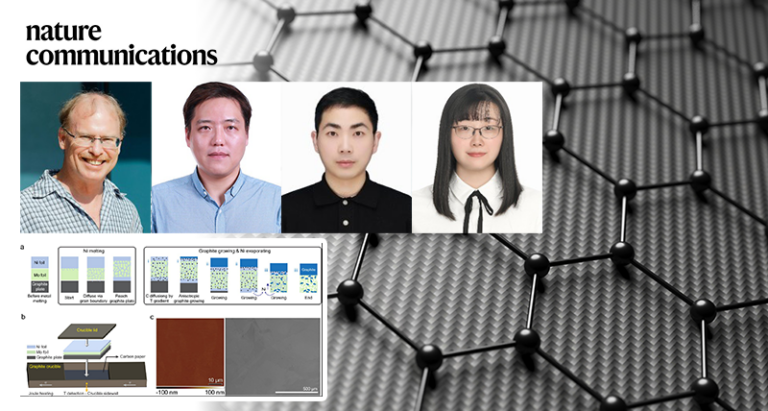A research team, affiliated with UNIST has announced a significant advancement in the efficiency and stability of perovskite solar cells (PSCs), known as next-generation photovoltaic technology, through the development of a self-assembled hole transport material.
On March 19, Professor BongSoo Kim and his research team from the Department of Chemistry at UNIST, in collaboration with Professor Dong Suk Kim and Professor Jin Young Kim from the Graduate School of Carbon Neutrality at UNIST, as well as Professor Kyung-Koo Lee from Kunsan National University (KSNU), revealed their new self-assembling monolayer (SAM) material that enhances the performance of PSCs.
PSCs are highly competitive in price due to their use of inexpensive materials and low manufacturing costs. The self-assembled monolayer serves as the material that transports holes (positively charged carriers) generated by the light-absorbing perovskite layer to the electrode. Because the SAM forms through the self-assembly of molecules on the substrate, it provides a cost advantage over traditional polymer-based hole transport layers.

The research team designed a new molecule, MeS-4PACz, to improve hole transport performance beyond that of its predecessor, 4PACz. The application of MeS-4PACz in PSCs resulted in a power conversion efficiency of 25.16%, an increase of over 13% compared to previous SAMs. High efficiency in solar cells arises when both electrons (negatively charged carriers) and holes efficiently reach the electrodes. The hysteresis value—the indicator of solar cell output and long-term stability—also showed significant improvement.
The developed material demonstrated excellent photostability, maintaining 93% of its initial efficiency after exposure to strong sunlight for 500 hours, while the solar cells utilizing 4PACz saw a reduction in efficiency of over 20% after the same duration.
The MeS-4PACz molecule incorporates a methylthio (-SCH₃) functional group that aligns well with the energy levels of the perovskite layer, facilitating the smooth transport of holes generated in the perovskite layer to the electrode. Additionally, the sulfur in the methylthio group forms a strong chemical bond with the cations in the perovskite, effectively preserving the initial optimized state of the perovskite layer under solar exposure and significantly enhancing interfacial stability.
Professor Kim noted, “The developed SAM maximizes the cost advantages of PSCs while simultaneously improving their stability and efficiency, greatly enhancing the prospects for market entry of perovskite solar technologies.”
This research involved joint first authors Dr. Shahid Ameen, researchers Dongmin Lee and Jung Geon Son from UNIST, along with Abdullah Bin Faheem from Kunsan National University.
The findings have been made available online in Angewandte Chemie International Edition ahead of its formal publication. The research was conducted with support from the Ministry of Science and ICT (MSIT) and the National Research Foundation of Korea (NRF).
Journal Reference
Dr. Shahid Ameen, Dongmin Lee, Abdullah Bin Faheem, et al., “3,6-Bis(methylthio)-9H-carbazole Based Self-Assembled Monolayer for Highly Efficient and Stable Inverted Perovskite Solar Cells,” Angew. Chem., Int. Ed., (2025).



